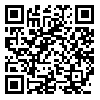BibTeX | RIS | EndNote | Medlars | ProCite | Reference Manager | RefWorks
Send citation to:
URL: http://etiadpajohi.ir/article-1-434-en.html
Objective: This study was an attempt to predict addiction potential based on family process and content model in high school students. Method: The research method in this study was a descriptive-correlational one. All the high school students of Karaj city in the academic year 2012-2013 constituted the statistical population of the study. From this population, the number of 410 participants was selected through random cluster sampling. The research instruments here included Addiction Potential Scale (Zargar, 2006), Family Process Scale (Samani, 2007) and Family Content Scale (Samani, 2007). Results: The results showed that there was a significant negative correlation between the predictor variables and criterion variable. In addition, the results of regression analysis showed that the family process and content model can predict addiction potential. Conclusion: The research results have several applied implications.
Received: 2014/06/6 | Accepted: 2015/10/23 | Published: 2015/10/29
| Rights and permissions | |
 |
This work is licensed under a Creative Commons Attribution-NonCommercial 4.0 International License. |





